Best Low Light Point And Shoot Cameras
The best point-and-shoot cameras in 2021
Included in this guide:
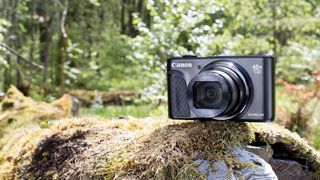
The best point-and-shoot cameras are a no-fuss way to raise your photography game. Affordable, reliable and easy to use, these fixed-lens cameras are designed to get you shooting as quickly as possible from the moment you open the box. Point-and-shoots used to have a reputation as being cheap and inferior, but manufacturers have majorly stepped up their game, and these days point-and-shoots are some of the best beginner cameras around. With Black Friday 2021 right around the corner, and deals already starting, it's the perfect time to pick up a point-and-shoot.
- Black Friday 2021: early deals are already here
Point-and-shoot camera manufacturers know they have to offer something qualitatively different from a smartphone these days, and so you'll commonly see point-and-shoots with powerful optical zoom lenses and good-sized sensors – things that are hard to do in the limitations of the physical form factor of a smartphone.
If all this terminology confuses you then don't worry – click to jump to our section on what to consider when buying a point-and-shoot camera, where we run through the main features you'll want to look out for, and answer a few commonly asked questions.
Though there's loads of choice out there, we've kept out list to the ten point-and-shoot cameras we feel offer the best value for money right now. We've included a mixture of ultra-affordable starter cameras, premium compacts that offer a richer experience for a higher price tag, and everything in between. Whatever your needs, experience level and budget, there will be a great point-and-shoot camera for you on this list.
The best point-and-shoot cameras available now
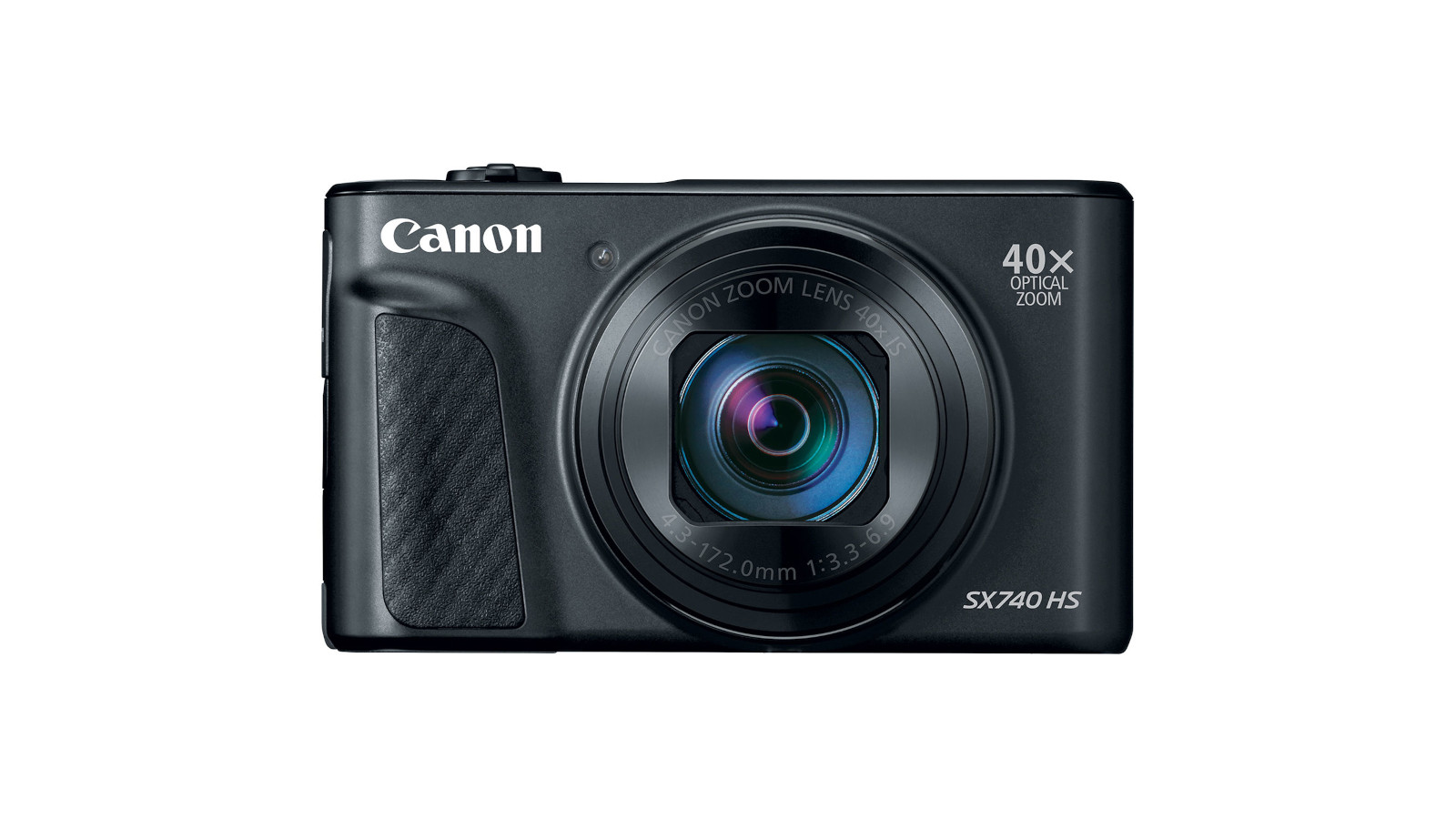
01. Canon PowerShot SX740 HS
The best all-round point-and-shoot camera, with a fantastic zoom
Specifications
Type: Compact
Sensor: 1/2.3-inch back illuminated
Megapixels: 20.3MP
Lens: 24-960mm f/3.3-6.9 (40x optical)
Monitor:: 3.0-inch, 922,000 dots
Viewfinder: No
Continuous shooting speed: 6fps
Video: 4K UHD
Level: Beginner - intermediate
Reasons to buy
+Portable and compact +Great zoom
Reasons to avoid
-No viewfinder -Relatively small sensor
In terms of balancing features, performance and price, the Canon PowerShot SX740 HS is the best point-and-shoot camera you can buy right now. With a 40x optical zoom covering an equivalent focal range of 24-960mm, it can bring distant objects into sharp close focus with ease, and thanks to the 3.5-stop image stabilisation, the telephoto end of this lens is actually useable.
The SX740 is pleasingly light and portable, unlike many superzoom bridge cameras, so it's easy to pack up and take with you on your travels. Having a 10fps burst-shooting mode is pretty handy too, meaning you always capture the moment. There's no viewfinder, which some users may dislike, but if you're used to shooting on a smartphone, you may well find that you naturally gravitate towards composing on the screen anyway.
There are other cameras on this list that provide better image quality; the SX740 only has a 1/2.3-inch sensor, which is similar to what you'd find in a smartphone. However, the extensive array of features at such as competitive price point makes it a winner in our book.
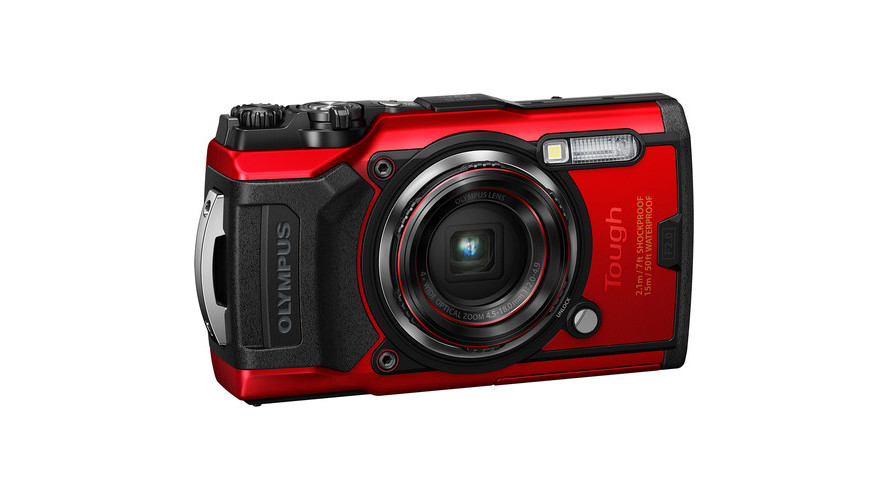
02. Olympus Tough TG-6
The best waterproof point-and-shoot camera
Specifications
Type: Tough compact
Sensor: 1/2.3inch
Megapixels: 12MP
Lens: 25-100mm f/2
Screen: 3in fixed LCD, 1.28million dots
Viewfinder: EVF, 1.04million dots
Max burst speed: 20fps
Max video resolution: 4K 30p
Level: Beginner/enthusiast
Reasons to buy
+Can take a beating +Useful optical zoom range
Reasons to avoid
-Small sensor -Minor upgrade over predecessor
If you need a point-and-shoot camera that can take a soaking, a beating and even a freezing, the Olympus Tough TG-6 is it. This tough compact camera is waterproof down to depths of 15m, shockproof against drops of up to 2.1m, crushproof up to 100kgf and freezeproof down to -10°C. The other half of the picture is pleasing too, as this is a highly capable camera on the inside, with a backlit 12MP CMOS sensor and a 25-100mm equivalent lens with a maximum aperture of f/2. Whether you're taking pictures above the water or below, you'll reliably get good results with the TG-6.
It's a fairly minor upgrade over Olympus's previous TG camera, the TG-5, adding in some close-up photography tools and slow-motion video capabilities, but otherwise remaining pretty much the same (so if you want to save some cash, the TG-5 is worth seeking out). Having built-in Wi-Fi is a handy way to get shareable images nice and quickly, and the various underwater modes make it easier to optimise the camera for shooting beneath the waves.
Again, like the SX740 HS, it's got a sensor on the small side (for larger sensors, look further down the list where we get into more expensive point-and-shoots), but the Tough TG-6 is a highly capable shooter that'll stand up to some serious punishment.
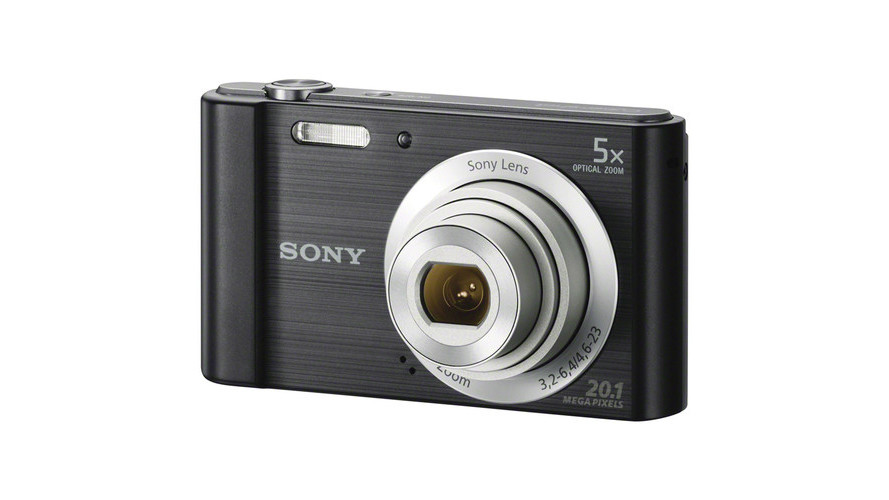
03. Sony Cyber-shot W800
The best ultra-cheap point-and-shoot camera
Specifications
Type: Compact
Sensor: 1/2.3inch
Megapixels: 20.1MP
Lens: 26-130mm (equivalent) f/3.2-6.4
Screen: 2.7in fixed LCD, 0.23million dots
Viewfinder: No
Max burst speed: 1fps
Max video resolution: HD at 30p
Level: Beginner
Reasons to buy
+Incredibly cheap +Decent zoom range
Reasons to avoid
-Very basic feature-set -Not MUCH better than a smartphone
There are a fair few ultra-cheap point-and-shoots out there, but these days you need to weigh up whether a camera is really offering more than the camera you always have in your pocket, a.k.a. your smartphone. The Sony Cyber-shot W800 fulfils that brief, but only just, hence its incredibly low asking price.
In terms of most camera functionality, the W800 doesn't have much to write home about. Its 1/2.3-inch sensor is similar to the kind you'd find in smartphones, it only shoots HD (not even Full HD) video, and its burst mode tops out at an unedifying 1 frame per second. What it does have going for it is a decent zoom range for this price point, covering an equivalent optical span of 26-130mm. This gives the user a decent level of shooting flexibility.
If you just need a simple point-and-shoot camera that works for the lowest price possible, the Sony W800 will do the job. If you're looking for a serious upgrade over a smartphone, we'd recommend spending a bit more for one of the other cameras listed.
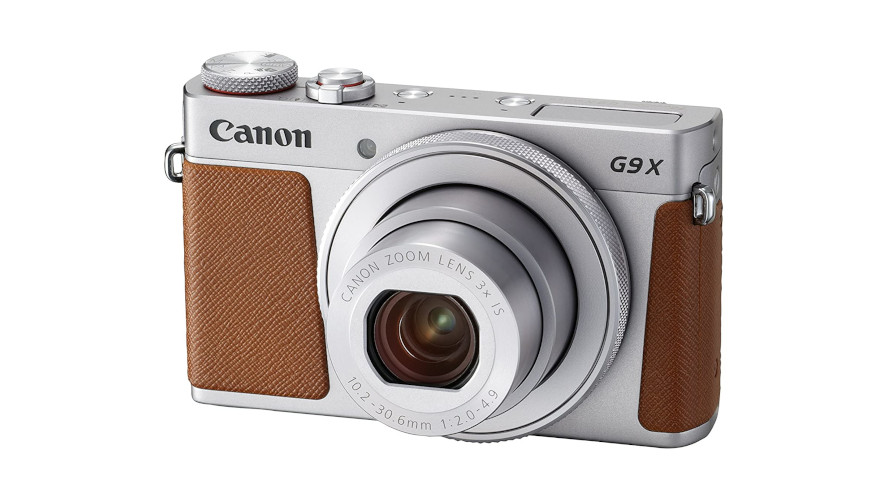
04. Canon PowerShot G9 X Mark II
The best point-and-shoot camera for a bit of everything
Specifications
Type: Compact
Sensor: 1in
Megapixels: 20MP
Lens: 28-84mm (equiv) f/2-4.9
Screen: 3in fixed touchscreen, 1.04million dots
Viewfinder: No
Maximum continuous shooting: 8.1fps
Max video resolution: Full HD
Level: Enthusiast
Reasons to buy
+Punchy colours +Sensor upgrade over smartphone
Reasons to avoid
-No viewfinder -Lens a little soft
The Canon PowerShot G9 X Mark II offers a fantastic balance between value and functionality. It costs a little more than your bargain-bin point-and-shoot, but you get a whole lot more for your money, with a sensor capable of producing both punchy JPEGS and highly adjustable RAW files. It's even possible to convert RAW files in-camera.
There are enough features on this Canon camera to satisfy any prospective point-and-shoot buyer. It shoots excellent Full HD video (it's not 4K, but you probably don't need that), and it has an intuitive touchscreen interface that's a joy to use. Since this camera's been around for a few years now, you can pick it up for a great price, making it one of the best point-and-shoot cameras around when it comes to value for money.
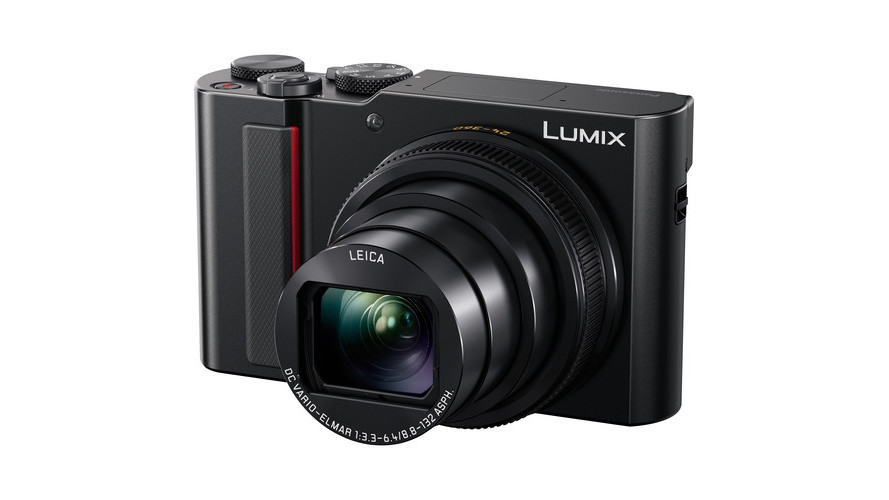
05. Panasonic Lumix ZS200 / TZ200
The best point-and-shoot for travel, with a big zoom in a tiny body
Specifications
Type: Superzoom compact
Sensor: 1in
Megapixels: 20.1MP
Lens: 24-360mm (equiv) f/3.3-6.4
Screen: 3in fixed touchscreen LCD, 1.24million dots
Viewfinder: EVF, 2.33million dots
Max burst speed: 30fps
Video: 4K
Level: Intermediate
Reasons to buy
+Large sensor for a compact +Hugely improved zoom
Reasons to avoid
-LCD fixed in position -Disappointing max aperture
Panasonic's TZ range of travel-friendly superzooms has been hugely popular with roaming photographers for a long time, and the Lumix TZ200 (also known as ZS200 in the USA) offers a leap forward in zoom capability. Panasonic has somehow managed to fit a 24-360mm equivalent onto a tiny body, giving this camera incredible reach.
The 1-inch sensor gives it real flexibility in all sorts of lighting conditions, making for a camera that's brilliantly versatile but uncomplicated and can still fit in a pocket. Whether you want to take simple reference photos for a creative project or high-quality prints to incorporate into your work: this is a solid choice.
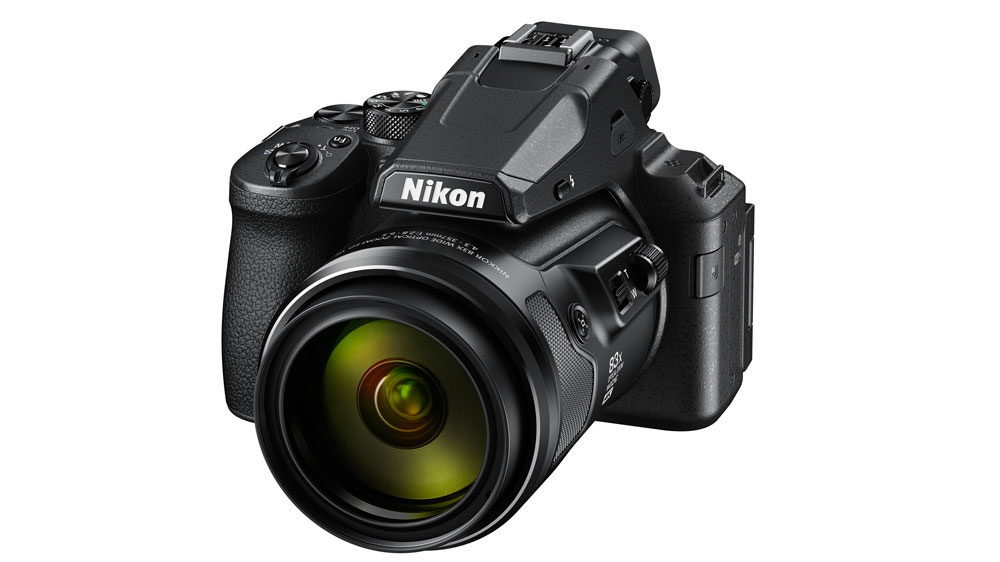
06. Nikon P950
The best superzoom point-and-shoot camera
Specifications
Type: Superzoom compact
Sensor: 1/2.3-inch CMOS
Megapixels: 16MP
Lens: 24-2000mm (35mm equivalent) f/2.8 to f/6.5
Screen: 3.2-inch, 921K dots
Viewfinder: 0.39-inch EVF (2359K dots)
Continuous shooting speed: Not specified
Video: 4K
Level: Intermediate
Reasons to buy
+Catch-all lens +Time-lapse movie option
Reasons to avoid
-Bulky -Expensive
We may be stretching the definition of a point-and-shoot camera a little here, but stretching is the name of the game with the Nikon P950. Its enormous lens puts your zoom potential further than pretty much any other camera out there, on a par in focal length terms with the kind of super-telephotos that run up four-figure price tags. But it would be remiss to over-simplify this bridge camera, which is aimed at intermediate users. A compact all-in-one, we could call it, and it may be the only camera you'll need thanks to the aforementioned huge 83x optical zoom with dual optical vibration reduction built into a focal length equivalent to 24-2000mm in 35mm film terms.
As well as a respectable f/2.8 maximum aperture, the camera can also shoot 4K video, and it supports the capture of Raw files, which makes it a solid option for enthusiasts who are after a big lens backup camera as well as those looking for a family camera that ticks all the boxes. You can see more Nikons in our guide to the best Nikon camera.
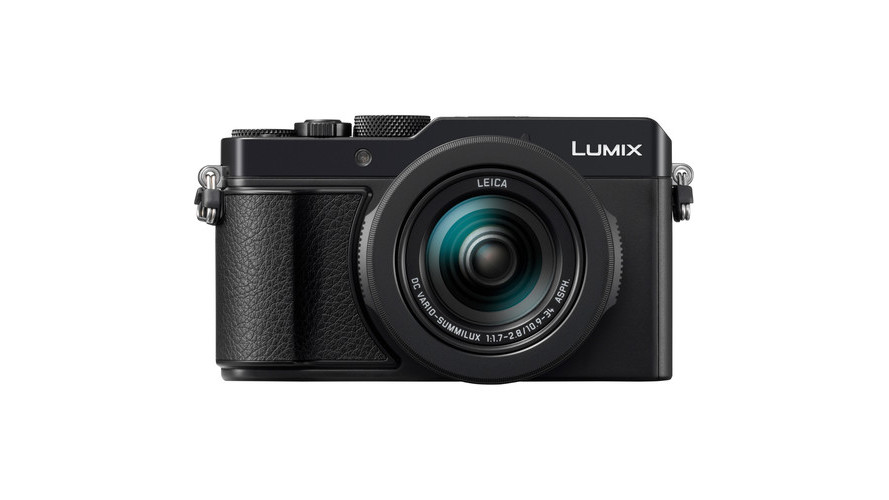
07. Panasonic LX100 II
A stylish compact with a clever multi-aspect sensor
Specifications
Type: Compact
Sensor: Four Thirds
Megapixels: 17MP
Lens: 24-75mm (equiv.) f/1.7-2.8
Screen: 3in touchscreen, 1,240,000 dots
Viewfinder: EVF, 2,760,000 dots
Continuous shooting speed: 11fps
Video: 4K
Level: Enthusiast
Reasons to buy
+Excellent large sensor +Switchable aspect ratios
Reasons to avoid
-Fixed LCD screen -No built-in flash
Released in 2018, the Panasonic Lumix LX100 II is the long-awaited follow-up to the original LX100. It offers a solid metal body with tactile dial-led controls, a super-sharp optic on the front with a wide maximum aperture of f/1.7.
Built around a 21MP Four Thirds sensor, the camera cannily uses only a portion of this for image-taking (to a maximum of 17MP) allowing image aspect ratios to be switched easily on the fly – handily accomplished using the aspect dial on the lens. It also boasts a huge selection of 4K video modes to play with. Four years in the making, this is a camera that was worth the wait.
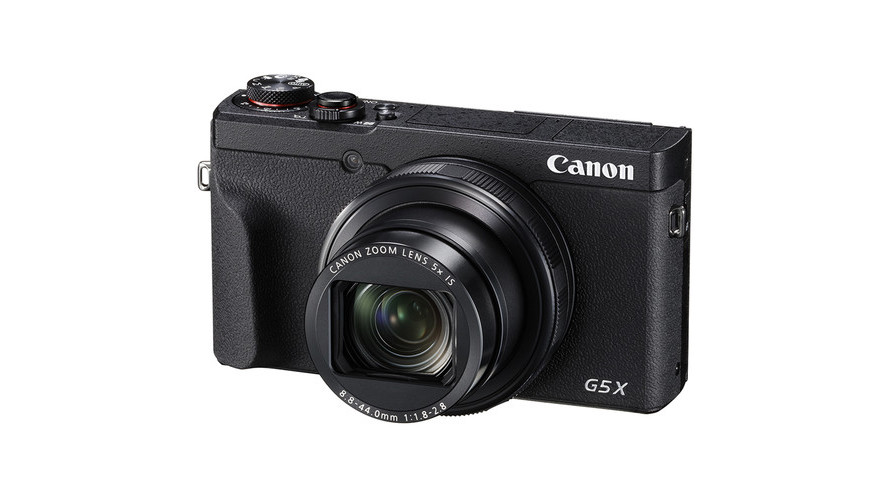
08. Canon PowerShot G5 X Mark II
Versatile and pocket-size, this point-and-shoot offers speed and quality
Specifications
Type: Compact
Sensor: 1in
Megapixels: 20MP
Lens: 24-105mm (equiv) f/1.8-2.8
Screen: 3in tilting touchscreen, 1,040,000 dots
Viewfinder: EVF, 2,360,000 dots
Maximum continuous shooting: 8fps with autofocus, 30fps RAW burst mode
Max video resolution: 4K
Level: Enthusiast
Reasons to buy
+Excellent zoom lens +Fast and responsive
Reasons to avoid
-Relatively pricey -Battery life not great
A good point-and-shoot camera should be easy to use, versatile, and, ideally, you should be able to put it in a pocket. The Canon PowerShot G5 X Mark II ticks all of those boxes and more. It has a 24-105mm lens, which gives us a very generous zoom range to play with, while its 20MP 1-inch sensor produces images that look fantastic, particularly in RAW mode. You can also burst-shoot in RAW mode at a mighty impressive 30fps.
This camera also boasts 4K video, a tilting touchscreen, and even finds room for an electronic viewfinder for those who prefer to compose images the classic way. The only disadvantage is that all this tech drags a little on the battery, which is CIPA-rated for about 230 shots before a recharge. We'd recommend packing a spare.
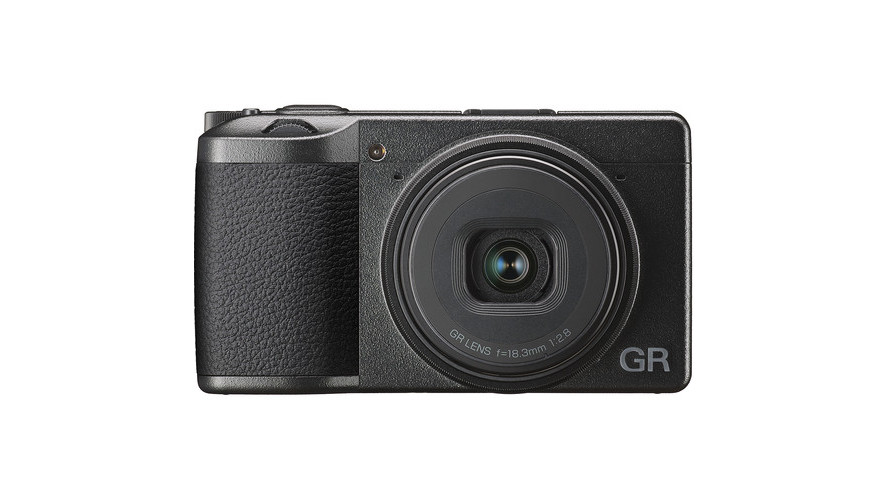
09. Ricoh GR III
Pocket-sized power that produces fantastically sharp images
Specifications
Type: Compact
Sensor: APS-C CMOS
Megapixels: 24.24MP
Lens: 28mm (equiv) f/2.8
Screen: 3in touchscreen LCD, 1,040k dots
Viewfinder: No (available separately)
Max continuous shooting speed: Not specified
Video: Full HD
Level: Enthusiast
Reasons to buy
+Fantastic, low-noise images +RAW support and in-camera processing
Reasons to avoid
-No 4K video -Poor battery life
The Ricoh GR III represented an impressive comeback from Ricoh, and it was highly anticipated by photographers of all disciplines. It's a brilliant fixed-focal-length APS-C compact that can rival arguably the leader of this type of compact, the Fujifilm X100V (more on which shortly). The APS-C sensor delivers fantastically crisp results whether shooting 24MP images or Full HD video, and the redesigned 28mm lens produces images that are sharp from corner to corner.
The battery life could be better, lasting only around 150 shots per charge – not really enough for a camera that was only released in 2019. The lack of 4K video is also a shame, and you should look elsewhere if that's important for what you need. But as pocketable compact for still shooters, the Ricoh GR III excels in all other categories.
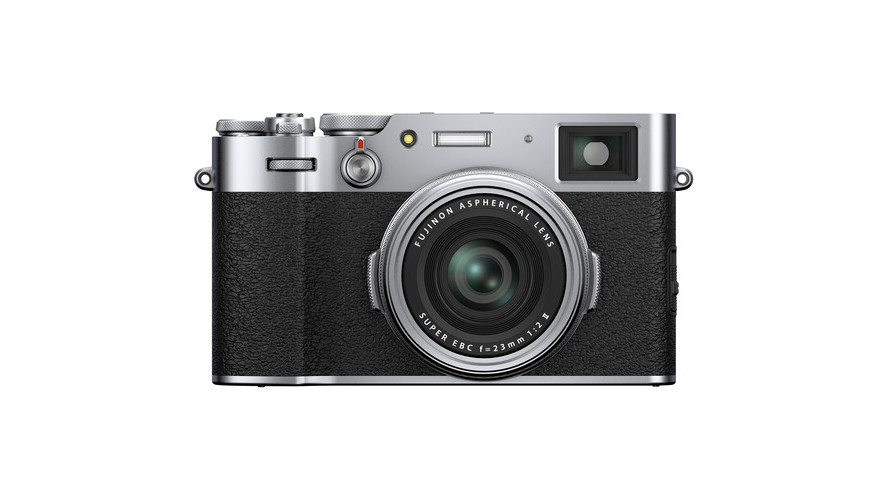
10. Fujifilm X100V
One of the most intuitive, stylish, tactile compacts around
Specifications
Sensor: APS-C
Megapixels: 26.1MP
Lens: 35mm (equiv) f/2
Monitor: 3in fixed, 1,620,000 dots
Viewfinder: Hybrid optical/EVF, 3,690,000 dots
Max burst speed: 11fps (mechanical shutter) / 20fps (electronic shutter)
Max video resolution: 4K
Level: Enthusiast/professional
Reasons to buy
+Makes photography fun +Absolutely sublime image quality
Reasons to avoid
-No zoom lens -Pricey
The X100V is the fifth camera in the Fujifilm X100 series of compacts. These cameras have been winning people over for decades with its combination of a high-quality X-Trans sensor, a 35mm equivalent prime lens, dial-based controls and a stylish retro-inspired design.
Some photographers may be put off by the lack of zoom, but as the old adage goes, sometimes the best way to zoom in is to move your feet. Images look gorgeous straight out of the camera, with the vibrant colours Fujifilm is known for. The X100V is also the first in the series to shoot 4K video. This camera is by no means cheap, but that's to be expected given that it's one of the best point-and-shoots ever made.
What to consider when buying point-and-shoot cameras
Point-and-shoot cameras offer different features for different needs. If you're planning to shoot in low light, there are full-frame point-and-shoots with generously sized sensors. If you want plenty of scope for distant subjects, you can pick up one of the many point-and-shoot superzooms. There are also plenty of models with waterproofing and tough casing for those who want a camera for more adventurous pursuits.
You might want a camera for Instagram, for taking photos to showcase professional projects, or just for travel. In each case, a point-and-shoot camera can work wonders, but this can make it tricky to know what to prioritise. Some users might want the longest zoom they can get for shooting distant subjects, while others might want to squeeze as much image quality as possible out of this small package, in which case a larger sensor is the way to go.
The best point-and-shoot camera for you will also depend on your expectations and your budget. As a general rule, cameras with 1in, APS-C and full-frame sensors offer many advantages over those with smaller sensors, most notably when it comes to shooting in low light. Prime lenses can also offer great advantages over zooms in terms of image quality.
You should also look out for cameras with tilting LCD screens if you want to get creative, as well as viewfinders if you tend to shoot outdoors with any frequency. Note that a long zoom is great for holidays and travelling, but this tends to be accompanied by a narrower maximum aperture range, which can make the camera harder to use in low light and when looking to create a shallow depth of field.
The best point-and-shoot camera: FAQs
What defines a point-and-shoot camera?
It's a term we hear a lot, but what does it mean?
'Point-and-shoot' is not an official camera designation the way terms like 'DSLR' or 'mirrorless' are. With that said, the term does have a generally accepted meaning in the photographic community: it's a camera with a fixed-lens that's easy to pick up and use. A fixed-lens camera is also known as a compact; all point-and-shoots are compacts, but not all compacts are point-and-shoots, as some are quite advanced (not to mention expensive) and designed for serious photographers.
Which point-and-shoot camera has the best zoom?
Nothing beats a long zoom!
If you're looking for zoom length and nothing else, then we'd recommend taking a look at superzoom compacts like the Nikon P950. These cameras have incredible optical zoom lenses, which pair with digital zoom technology to give you unbelievable optical reach. This makes them pretty bulky, but their power to close distance is unmatched at their price point.
Which point-and-shoot camera is best in low light?
Point-and-shoots can be great for shooting at night, if you get the right one.
While point-and-shoots aren't known for their low-light qualities, some careful selection can lead you to a great camera. The things you want to look out for are a decent sized sensor (ideally APS-C, though Four Thirds will do), good high-ISO performance, and a large maximum aperture on the lens – remember, you won't be able to change it. Based on these criteria, from the list above we'd recommend looking at the Panasonic LX100 II, which has a real advantage in the form of its f/1.7 lens, as well as a decent-size sensor.
Why should you buy a point-and-shoot camera?
What are the advantages of this camera type compared to others?
The two main advantages of point-and-shoot cameras are convenience and portability. Point-and-shoots are easy to use, they tend to be light, and they have everything you need to start taking pictures from the moment you open the box. They also tend to be much more affordable than buying the equivalent camera and lens combination would be in a DSLR or mirrorless system.
So why doesn't everyone use point-and-shoots? Well, having a fixed lens does hamper your versatility; you'll never be able to exceed the stated focal range in either direction, so go longer or wider than the camera was meant to. They also tend to have smaller sensors than interchangeable-lens cameras, which can have an effect on the dynamic range of images, and the camera's low-light performance.
If you need a decent, affordable camera with some nifty features, and not the best technology in class, then a point-and-shoot is the way to go.
Related articles:
- The best photo apps and photo editing software
- 15 ways to improve your photography skills
- Photography cheat sheet helps you take better photos
Related articles
Best Low Light Point And Shoot Cameras
Source: https://www.creativebloq.com/features/the-best-point-and-shoot-camera
Posted by: baileyclinguen1988.blogspot.com

0 Response to "Best Low Light Point And Shoot Cameras"
Post a Comment